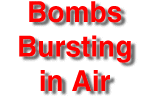|
An in-depth look at the Nationa Missile Defense System Page 4 |
Let the Testing Begin
Patience, of course, does not mean sitting around. Program managers are pressing ahead with an aggressive schedule of testing and development, confident NMD will prove itself. "All the technologies required to do this job have been demonstrated. That's well in hand. What we're doing is integrating those various elements," Evatt explained. "The key is to find ways to absorb and work through issues as they come up ... There are no development programs without issues. If you didn't have issues, you would not need development." And there have been "issues." In two of the three Intercept Flight Tests conducted to date, the system failed to hit and destroy the incoming warhead. The first failure was traced to a leaky coolant line that prevented InfraRed sensors on the EKV from functioning; the second, to an apparent communications failure that kept the EKV from separating from the booster. Both glitches were unrelated to the core technologies and overall design. In both tests, the major elements worked well and a great deal was learned, Evatt insists. Besides, he points out, the Atlas ICBM program experienced 12 failures during three years of testing. The Minuteman 1 program suffered 10 failures during nearly four years of testing. Failures are expected in the complex world of aerospace. During the next 30 months there will be countless tests
of NMD subsystems and components, plus 13 more Intercept Flight Tests (IFT)
of increasing complexity and realism. Two IFTs are scheduled this year
(May/June and November/December); two or three more in 2002, and another
seven or eight in 2003.
Clock is Running
Thirty-five nations are now known to possess some form of ballistic missile; at least 10 have chemical or biological weapons; eight have atomic weapons and at least three, possibly five, nations are actively seeking to join the "nuclear club." Not surprisingly, the new “Global Economy” includes a bustling trade in ballistic missiles and chemical, biological and nuclear weapons. Consider the history of the Taepo-dong I. North Korea developed the missile using SCUD and rocket engine technologies from Russia, Egypt and China. Mean- while, North Korea is marketing missile technologies to Iran, Syria, Pakistan and Libya ÐÐ and these states, in turn, are trading for missiles and related technologies with Russia, China, Saudi Arabia, India and a number of governments in Eastern and Western Europe. Weapons of mass destruction are harder to track than missiles, but what is known can make for sleepless nights. For starters, chemical and biological weapons are fairly simple to make. Anyone with a degree in chemistry or microbiology can access the Internet and find mountains of useful data in minutes. Such weapons are in easy reach of any government or terrorist group that wants them. And nuclear weapons are no big secret anymore. Most colleges and universities teach the essential physics behind nuclear bombs, and commercial reactors around the world produce plutonium as a daily byproduct. Actually building a bomb, however, requires large investments of money, materials, time and testing, making it all but impossible to do in secret. That's where the nuclear black market comes in. The collapse of the Soviet Union in 1989 ended the Cold War. But it ushered-in a new set of nuclear terrors: the world’s second-biggest atomic arsenal, spread over millions of square miles, with a government in melt-down, rampant gangsterism, and thousands of engineers and military personnel going months without a paycheck. There have been numerous close calls. In 1995, U.S. Customs agents in Miami arrested two Lithuanians in a sting involving the sale of smuggled Russian shoulder-fired missiles and a "small nuclear device." In 1998, Russian security agents uncovered a conspiracy among employees at a weapons plant to steal more than 40 pounds of highly-enriched uranium. “Ballistic missiles armed with WMD payloads (Weapons of Mass Destruction) pose a strategic threat to the United States. This is not a distant threat,” reported a 1998 Commission headed by now Secretary of Defense Donald Rumsfeld. Only 46 days after the release of the “Rumsfeld Report,”
North Korea fired its Taepo-dong missile over Japan. The debate over NMD
began in earnest.
|
